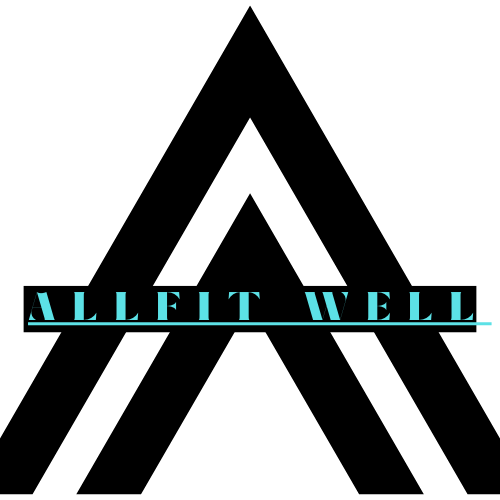Gelatin can seem like just a dessert ingredient, but it holds surprising health perks for older adults. This jelly-like substance, made from cooked animal collagen, carries nutrients that support aging joints while offering unexpected benefits from head to toe. Beyond easing stiff knees and creaky hips, gelatin displays/demonstrates/shows promise for improving skin elasticity, gut function, and even sleep quality. With some clever kitchen tricks, this humble protein can become an elder’s silent ally against multiple age-related concerns.
What Is Gelatin and How Is It Made?
Since gelatin is a common ingredient in foods and supplements, many people ponder where it comes from and how it’s made. Gelatin is a protein derived from collagen, a key structural protein found in animal skin, bones, and connective tissues.
To create gelatin, these animal parts are boiled in water, breaking down collagen into smaller proteins. Once cooled, the mixture forms the familiar jelly-like texture. The process preserves beneficial amino acids, especially glycine, which supports health in multiple ways.
Though gelatin lacks tryptophan, making it an incomplete protein, its high glycine content is valuable for bodily functions. The production method guarantees a natural, easily digestible product used in everything from desserts to supplements. Comprehending its origins helps people appreciate its role in diet and wellness.
Nutritional Profile of Gelatin
Gelatin could resemble a basic jelly, but its nutritional composition delivers a remarkable impact. Derived from collagen, gelatin is nearly pure protein, packed with unique amino acids that support bodily functions. Its standout feature is glycine, the most abundant amino acid in gelatin, which plays a key role in metabolism and tissue repair.
- Protein-rich: Gelatin is almost entirely protein, though it lacks tryptophan, making it an incomplete protein.
- Glycine powerhouse: It’s the richest natural source of glycine, aiding digestion and inflammation control.
- Collagen-building blocks: Contains proline and hydroxyproline, essential for skin and connective tissues.
- Minimal vitamins/minerals: Small amounts of calcium, phosphorus, and iron contribute to bone and blood health.
- Digestible: Easily absorbed, making it gentle on sensitive stomachs.
While not a complete protein, gelatin’s amino acids offer targeted benefits, especially for seniors seeking nutrient-dense options.
Gelatin’s Role in Joint Health and Pain Relief
Gelatin can help reduce joint pain by providing key amino acids that support cartilage repair. Its high glycine content has been linked to decreased inflammation, easing discomfort during movement.
For those with joint issues, gelatin supplements could provide relief and improve flexibility over time.
Reduces Joint Pain
- Gelatin is rich in collagen, a protein that helps cushion joints and reduce discomfort.
- Studies suggest it might lessen stiffness, particularly in those with osteoarthritis.
- Glycine, an amino acid in gelatin, could ease inflammation linked to joint pain.
- Athletes taking gelatin reported less discomfort post-exercise compared to a placebo group.
- While research isn’t definitive, constant use could contribute to long-term joint comfort.
While not a cure, embedding gelatin may help ease daily aches, making movement feel less taxing. It’s a simple addition that could support better mobility over time.
Supports Cartilage Repair
Though joint pain is often linked to cartilage breakdown, gelatin offers a natural way to support repair. Gelatin is rich in glycine, an amino acid that helps rebuild collagen, the main protein in cartilage.
Studies show gelatin supplements can improve joint health by increasing collagen density and reducing inflammation, which slows cartilage wear. For seniors, this means better mobility and less discomfort over time. Combining gelatin with light exercise might further boost cartilage repair, rendering it a practical addition to daily routines.
Its ability to aid tissue regeneration makes gelatin a simple yet effective option for those handling age-related joint issues. By supporting cartilage repair, gelatin helps maintain flexibility and ease movement, offering long-term relief.
Skin and Hair Benefits of Gelatin
Several studies have shown that adding gelatin to a daily routine can lead to noticeable improvements in skin and hair health. Rich in amino acids like glycine, gelatin supports collagen density, which keeps skin firm and hydrated. For hair growth, it strengthens follicles, reducing thinning and breakage.
Gelatin boosts collagen density, improving elasticity and reducing dryness.
Studies show a 29% increase in hair numbers with gelatin compared to placebo.
Gelatin supplements augment individual hair thickness over time.
Regular intake helps skin retain hydration, reducing fine lines.
Unlike synthetic treatments, gelatin provides nutrients without harsh side effects.
For seniors, these benefits mean healthier skin and stronger hair, all from a simple dietary addition. The results speak for themselves—gelatin is a natural ally for aging gracefully.
Gelatin’s Impact on Gut Health
Because gut health plays an essential role in overall wellness, gelatin’s benefits extend beyond skin and hair—it actively supports digestive function. Gelatin helps strengthen the intestinal lining, reducing the risk of leaky gut, a condition where toxins escape into the bloodstream. Its amino acids, like glycine, can ease inflammation in the gut, offering relief for conditions like irritable bowel syndrome.
Studies suggest gelatin also supports liver function and balances blood sugar, which can indirectly improve gut health. By fostering a healthier gut microbiome, it aids digestion and nutrient absorption. For seniors, integrating gelatin through bone broth or supplements can help manage discomfort and cultivate digestive resilience. Its gentle, soothing properties make it a practical addition for those seeking natural gut support.
How Gelatin Supports Better Sleep
Alongside its digestive benefits, gelatin also plays a role in improving sleep quality. The amino acid glycine in gelatin helps regulate sleep by calming the nervous system and promoting deeper rest.
Glycine reduces time to fall asleep, helping seniors drift off faster. It bolsters sleep quality by increasing deep, slow-wave sleep cycles. Daytime tiredness and fatigue decrease, leading to sharper mornings. Glycine’s calming effect eases stress, making nighttime relaxation easier. Better slumber supports mental clarity and mood the next day.
Gelatin and Blood Sugar Regulation
Gelatin can help regulate blood sugar levels, thanks to its high glycine content, which improves insulin sensitivity. Studies indicate it can stabilize glucose metabolism, making it a potential assistance for those managing type 2 diabetes.
Incorporating gelatin in the diet could provide a straightforward way to support healthier blood sugar control over time.
Glycine and Insulin Sensitivity
The amino acid glycine plays an essential role in how the body handles blood sugar, particularly for those managing type 2 diabetes. Found in gelatin, glycine helps improve insulin sensitivity, making it easier for cells to absorb glucose efficiently.
- Supports insulin function: Glycine bolsters insulin signaling, helping the body use glucose more effectively.
- Lowers fasting blood sugar: Studies show glycine can diminish high glucose levels in people with type 2 diabetes.
- Improves glucose tolerance: It assists the body in processing sugar better after meals.
- Reduces HbA1c: Prolonged glycine intake can lower glycosylated hemoglobin, a key diabetes marker.
- Protects metabolic health: Glycine can reduce the risk of metabolic syndrome, which includes insulin resistance.
Gelatin Stabilizes Glucose Levels
Because blood sugar swings can leave people feeling tired or shaky, finding ways to keep glucose levels steady is key—and gelatin could help. Glycine, a key amino acid in gelatin, has been shown to support better blood sugar control, especially for those with type 2 diabetes.
Research suggests it improves glucose metabolism, helping the body process sugars more efficiently. Gelatin might also slow carbohydrate absorption, preventing sharp spikes and crashes in blood sugar levels. For seniors or anyone managing metabolic concerns, adding gelatin-rich foods like bone broth or sugar-free gummies could be a simple strategy.
Its unique amino acids, including glycine, make it a supportive choice for maintaining balanced blood sugar levels over time.
Potential Benefits for Liver Function
Could something as simple as gelatin actually support liver health? Emerging research suggests gelatin, rich in glycine, may play a role in maintaining liver function. Glycine, a key amino acid in gelatin, has been studied for its potential to protect the liver from damage and support metabolic processes.
Liver Protection: Gelatin’s glycine content may help reduce liver stress caused by toxins or inflammation.
Blood Sugar Control: Studies indicate glycine could assist in managing blood sugar, indirectly benefiting liver health.
Potential Anti-Cancer Effects: Initial research explores gelatin’s role in slowing certain cancers, though more evidence is needed.
Caution Advised: Those with liver or kidney conditions should consult a doctor before increasing gelatin intake.
Metabolic Support: Glycine aids detoxification, potentially easing the liver’s workload.
While promising, further studies are needed to confirm gelatin’s full impact on liver function.
Gelatin’s Role in Muscle and Bone Strength
Gelatin can support muscle recovery by providing amino acids that assist in tissue repair after exercise.
It also appears to amplify bone density by encouraging collagen production, which fortifies connective tissues.
Research suggests combining gelatin with vitamin C and exercise could further improve these benefits.
Supports Muscle Recovery
Many athletes and active individuals find that gelatin supplements can play a key role in muscle recovery and injury prevention.
- Collagen Boost: Gelatin boosts collagen synthesis, aiding tissue repair and joint health.
- Glycine Benefits: The amino acid glycine in gelatin supports inflammation reduction and muscle recovery.
- Injury Prevention: Studies suggest gelatin, paired with vitamin C and exercise, can lower connective tissue injuries.
- Amino Acid Support: Gelatin raises blood levels of collagen-building amino acids, speeding up muscle repair.
- Research-Backed: Findings from UC Davis and the Australian Institute of Sport highlight gelatin’s role in recovery.
For older adults, gelatin’s properties can ease joint strain while promoting faster healing after activity. Its simplicity makes it an accessible option for maintaining mobility and strength.
Enhances Bone Density
While bones naturally weaken with age, research suggests gelatin could help slow this process by strengthening bone density and supporting connective tissues. Gelatin is rich in glycine, an amino acid crucial for bone and cartilage formation.
Studies show it can boost collagen production, the protein that gives bones their structure. This can lead to stronger bones and a lower risk of fractures. One study found that combining gelatin with exercise improved artificial ligament strength by 30%, hinting at its potential for healing injuries.
For seniors, adding gelatin to their diet might preserve bone mass and keep connective tissues flexible. Simple options like bone broth or supplements can make a difference, offering an easy way to support long-term bone health.
How to Incorporate Gelatin Into Your Diet
Several simple methods exist to add gelatin to meals or beverages without altering flavors drastically. Gelatin dissolves easily in warm water or bone broth, making it a versatile addition to soups, stews, or hot drinks. For those seeking convenience, powdered gelatin can be mixed into everyday foods or taken as a supplement.
Stir into hot liquids: Dissolve gelatin in tea, coffee, or bone broth for a protein boost.
Blend into smoothies: Add unflavored gelatin to fruit or vegetable blends for thickness.
Mix with yogurt or oatmeal: Sprinkle gelatin powder into breakfast foods for extra nutrients.
Use in baking: Incorporate gelatin into muffins, bread, or desserts for improved texture.
Make homemade gummies: Combine gelatin with fruit juice for a healthy snack.
These options enable seniors to enjoy gelatin’s benefits without disrupting their usual diet.
Conclusion
Like warm sunlight melting winter’s stiffness, gelatin can gently restore what aging tries to steal—smooth joints, strong bones, and resilient skin. Each spoonful stitches comfort into creaky knees and tired muscles, weaving strength back into life’s tapestry. For seniors, it’s more than a nutrient; it’s a quiet ally, turning back time’s clock one savory sip at a time. Adopt its gifts, and step forward with ease.


